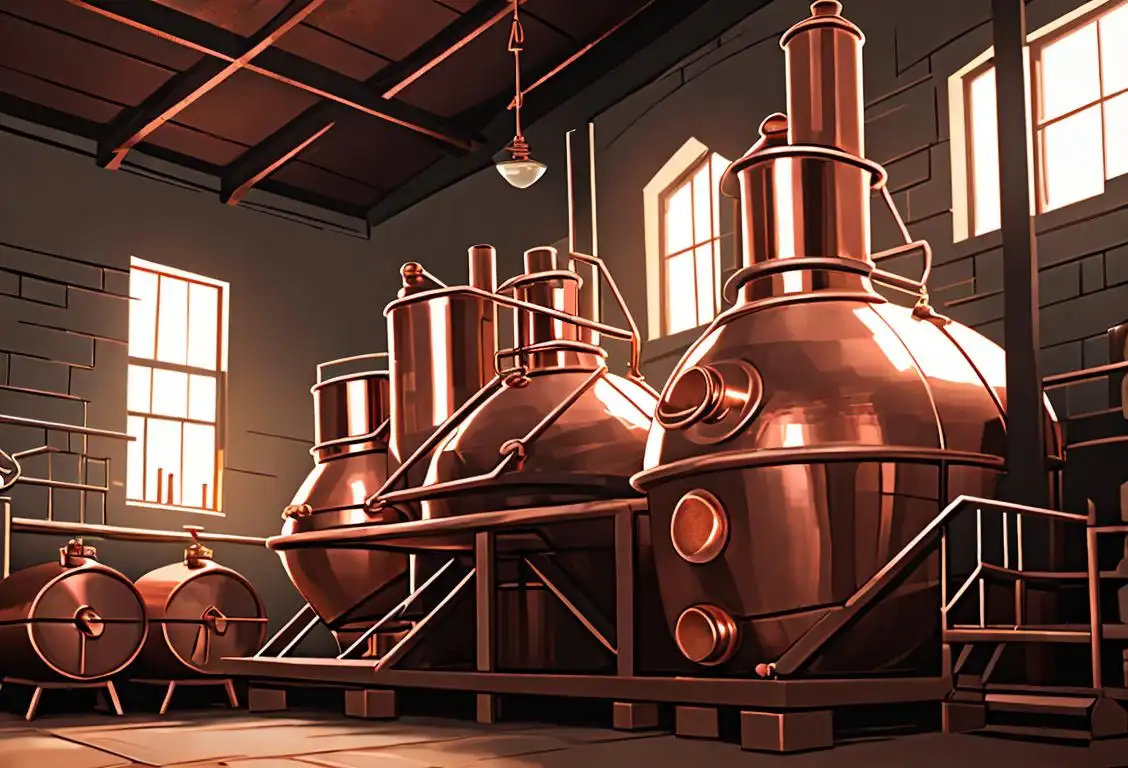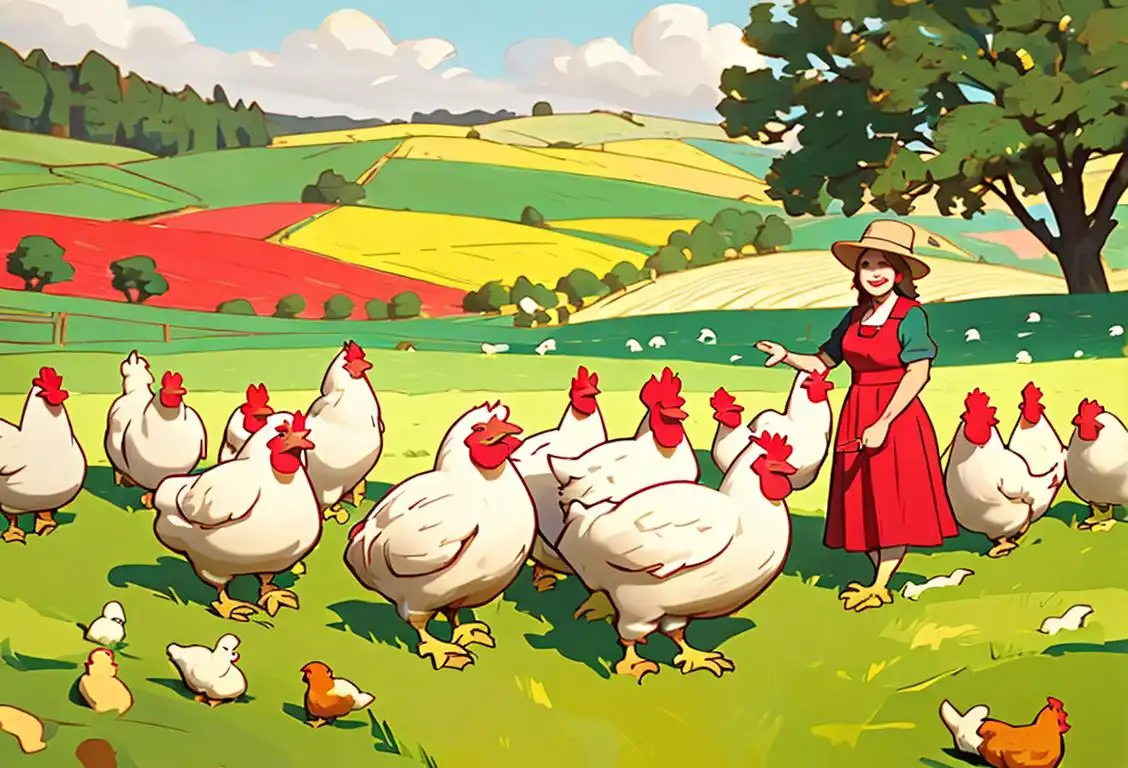National Craft Distillery Day

Welcome to National Craft Distillery Day! Get ready to raise a glass and celebrate the art of crafting delicious spirits. This special day is dedicated to recognizing the talented distillers who pour their heart and soul into creating unique and flavorful libations. So, grab a glass, take a sip, and let's explore the wonderful world of craft distilleries!
When is Craft Distillery Day?
It's national craft distillery day on the 22nd May.
The Spirit of Craft Distilleries
For years, the liquor industry was dominated by big-name distilleries churning out mass-produced spirits. But then, a craft distillery revolution started brewing, and it quickly gained momentum across the country. Craft distilleries focus on small-batch production, attention to detail, and using high-quality ingredients to create spirits that pack a punch in both taste and character.
One of the great things about craft distilleries is their commitment to innovation. They're not afraid to experiment with unique flavors and techniques, resulting in spirits that tantalize the taste buds and push the boundaries of what was once considered traditional.
Rise of the Craft Distillery Movement
So, how did this craft distillery movement gain such popularity? Well, it all started with a bunch of passionate folks who wanted to follow their dreams and make exceptional spirits. They believed that the true art of distilling lay in paying attention to the finest details, starting from the sourcing of ingredients to the careful aging process.
As the craft distillery movement grew, so did the demand for these artisanal spirits. People flocked to craft distilleries not only for the incredible taste but also to support local businesses and enjoy the sense of community that comes with being part of something small and special.
Whether it's a smooth whiskey, a vibrant gin, or a flavorful vodka, craft distilleries have something for everyone. And with their dedication to quality, you can sip on these spirits knowing that they were created with love, passion, and a commitment to excellence.
History behind the term 'Craft Distillery'
1775
The Birth of Distilling
Distilling is the process of refining liquid through heating and cooling to create a more purified product. The art of distillation dates back to ancient times, but in 1775, it became more prevalent with the rise of industrialization and the need for large-scale production.
1978
Microdistilleries emerge
The term 'craft distillery' can be traced back to 1978 when the first microdistilleries started emerging in the United States. These small-scale distilleries focused on producing spirits in small batches, with an emphasis on using traditional methods and high-quality ingredients to create unique and artisanal products.
1862
The Birth of the Craft Movement
The craft movement, also known as the Arts and Crafts movement, emerged as a reaction against mass production and the loss of traditional crafting methods. This movement emphasized quality, uniqueness, and a return to craftsmanship. It initially began in the field of decorative arts but later extended into other industries, including distilling.
2005
The craft distilling movement gains momentum
In 2005, the craft distilling movement gained significant momentum. This was due in large part to a growing interest in locally sourced and handcrafted products, as well as the increasing popularity of cocktails and mixology. Consumers began to seek out small-batch spirits that showcased the distiller's creativity and expertise.
1978
The Rise of Microdistilleries
In 1978, the United States passed a law known as the Small Distillery Act, which eased regulations and paved the way for the establishment of microdistilleries. These small-scale distilleries aimed to produce spirits with a focus on quality and innovation. The term 'craft distillery' started gaining traction to differentiate these microdistilleries from large-scale industrial producers.
2008
Craft distilling goes legal
Craft distilleries faced legal challenges in many states due to outdated regulations that favored large-scale producers. However, in 2008, a landmark change occurred when the Alcohol and Tobacco Tax and Trade Bureau created a new category known as 'craft distilleries.' This new classification recognized the unique nature and production methods of these small distilleries.
2010
Craft distilleries go global
By 2010, the concept of craft distilling had spread beyond the United States and gained international recognition. Craft distilleries started to pop up in various countries, including Canada, Australia, and the United Kingdom. This global expansion allowed for cultural exchange and the sharing of distilling techniques and traditions.
2000s
Craft Distilling Renaissance
The early 2000s witnessed the renaissance of the craft distilling industry. With the growing popularity of artisanal products and a renewed interest in traditional production methods, craft distilleries started to flourish. These distilleries embraced local ingredients, experimented with unique flavors, and employed hands-on techniques to produce small-batch, handcrafted spirits.
2010s
Recognition and Expansion
In the 2010s, craft distilleries gained recognition for their exceptional products and contribution to the spirits industry. Consumers began seeking out craft spirits for their authentic flavors and stories. The trend of craft distillation expanded globally, with numerous countries embracing the concept and fostering the growth of their own craft distillery scenes.
Present
Craft distilleries thrive
Today, craft distilleries continue to thrive and play a vital role in the spirits industry. The term 'craft distillery' has become synonymous with quality, innovation, and a commitment to the art of distilling. These small-scale producers often experiment with unique flavor combinations and use locally sourced ingredients, adding diversity to the world of spirits.
Did you know?
Did you know that the oldest licensed distillery in the United States is called Mount Vernon? Located on the grounds of George Washington's historic estate, it has been producing spirits since 1797! Cheers to history!Tagged
nsfw food funFirst identified
22nd May 2019Most mentioned on
22nd May 2019Total mentions
75Other days
Chocolate Mousse Day
Something On A Stick Day
Children Day
Awareness Day
Frappe Day
Taco And Vodka Day
Happiness Day
Opposite Day
One Day
Poultry Day









